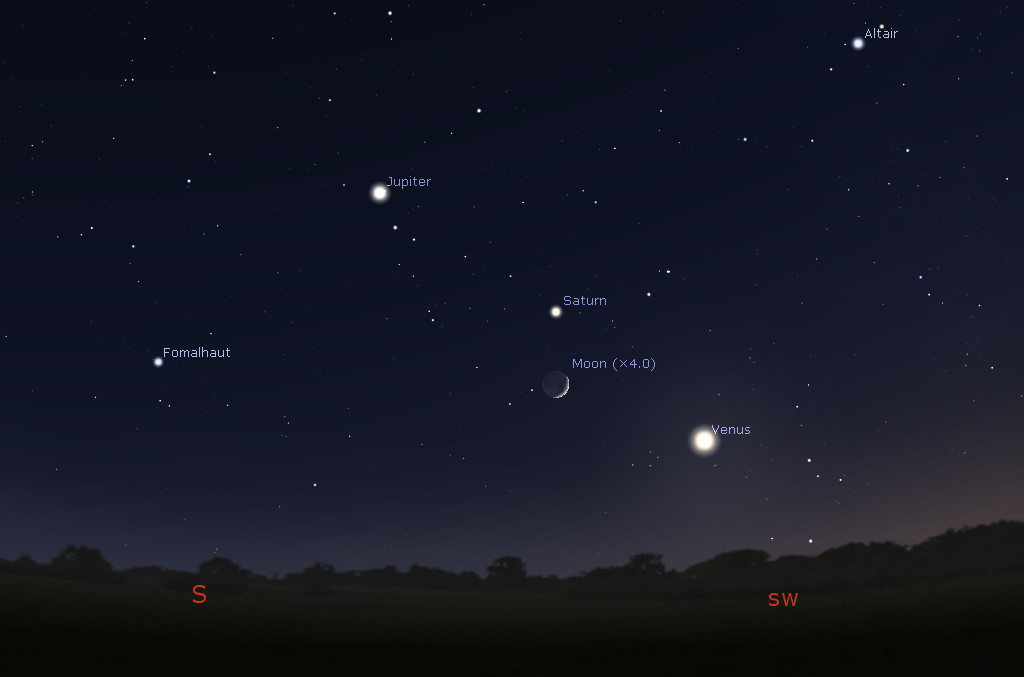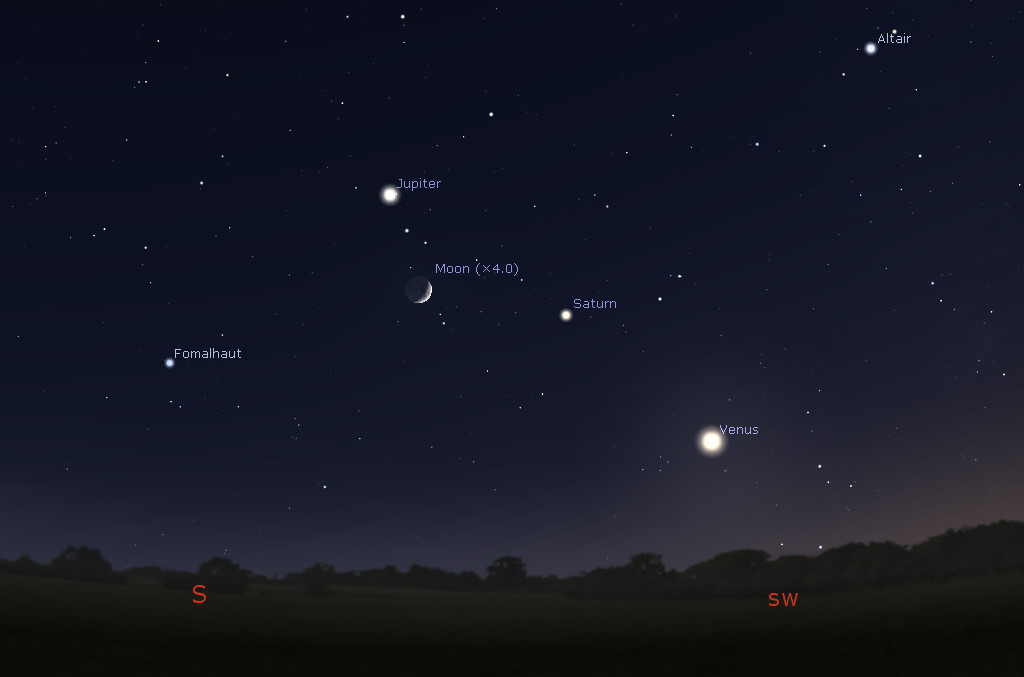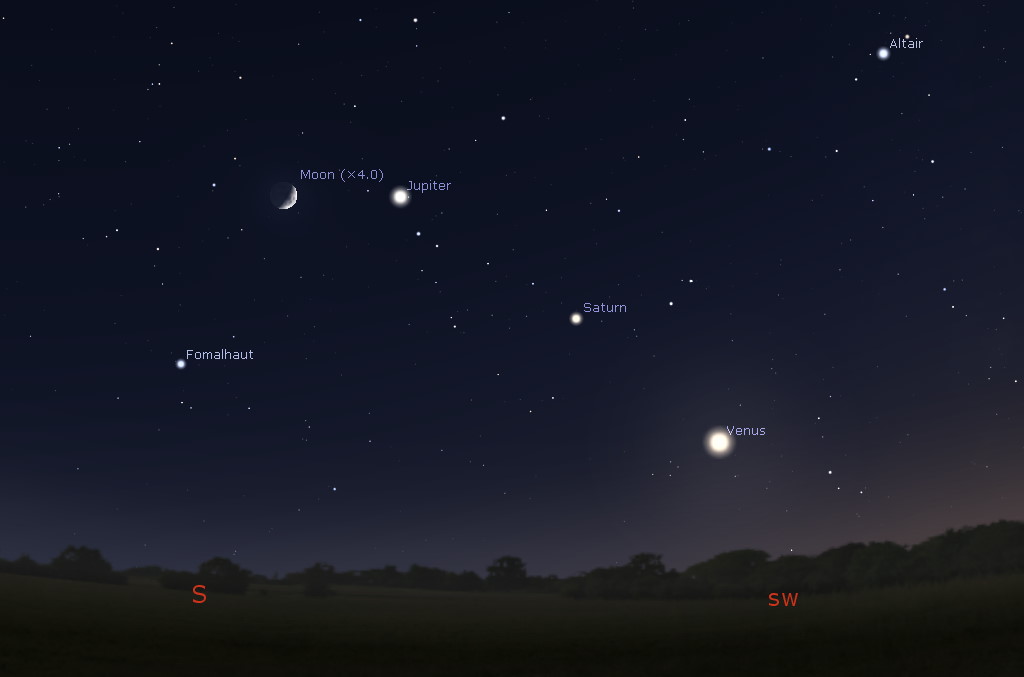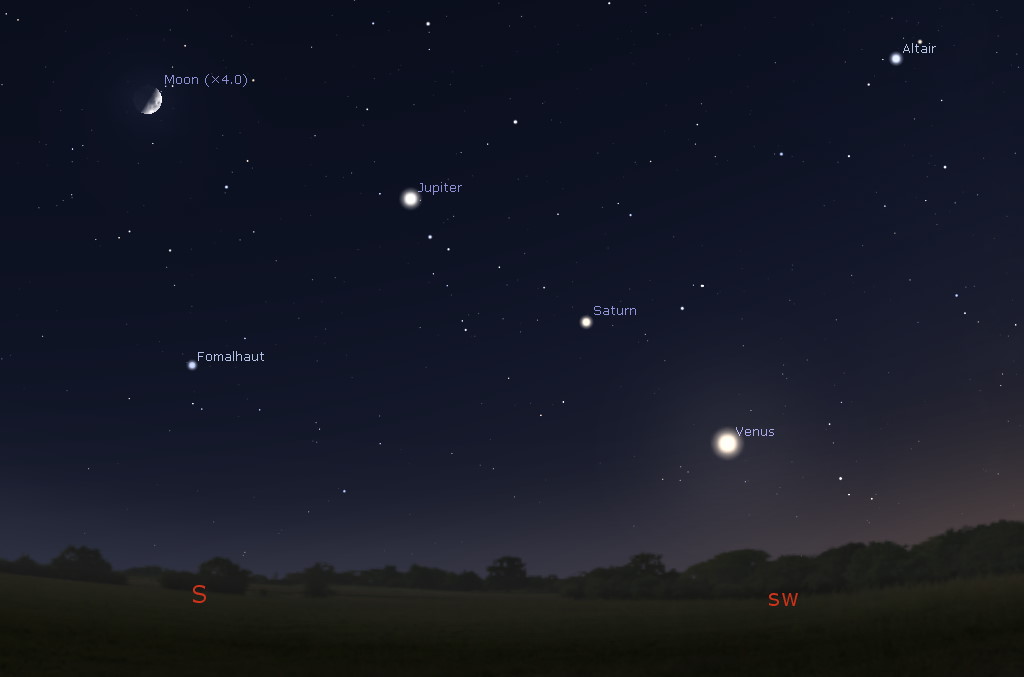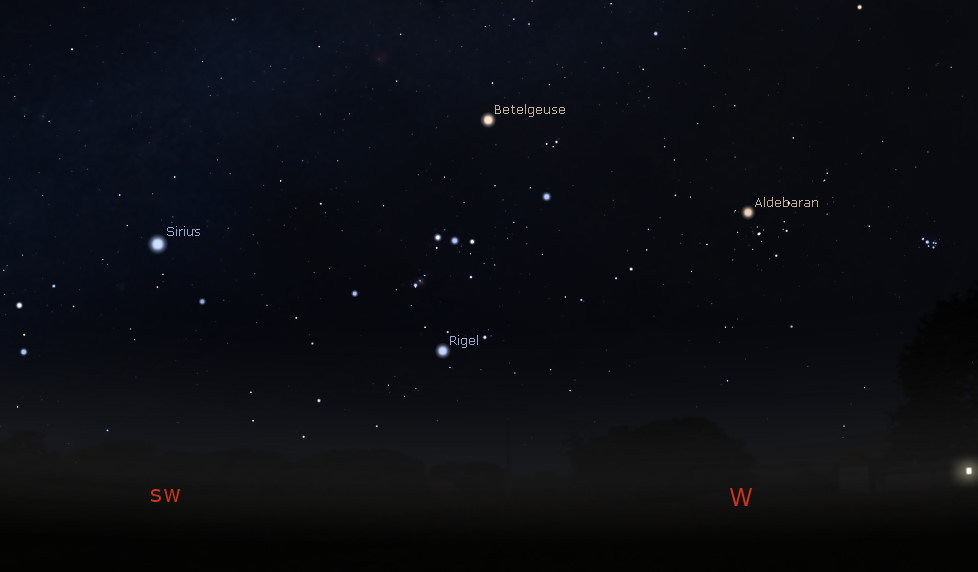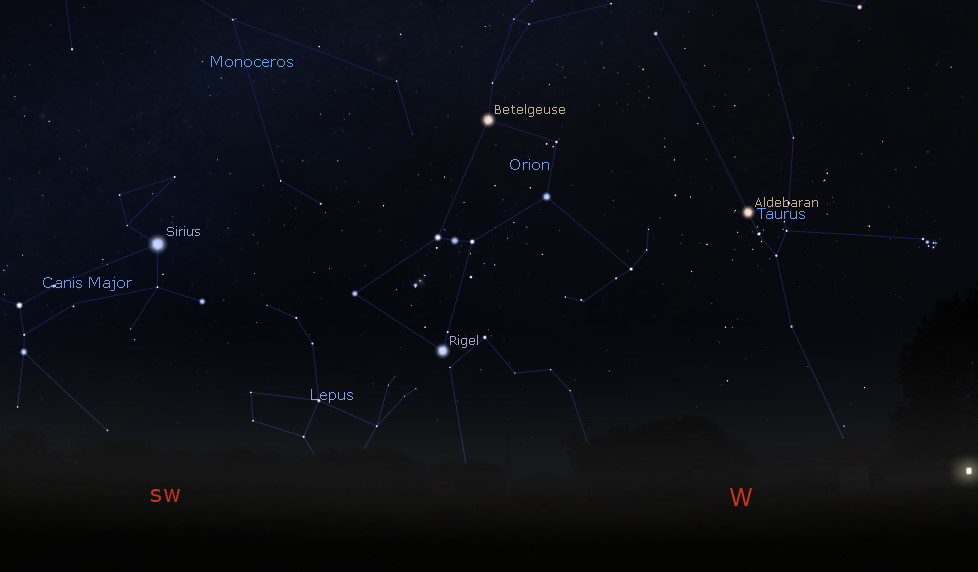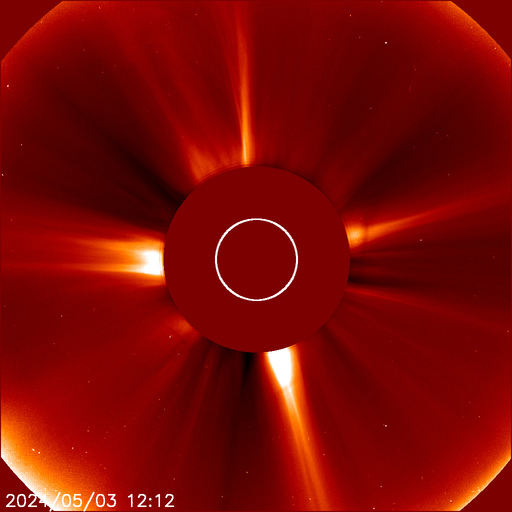Endeavour Space Academy
Another after-school astronomy club meeting, another instance of me being shocked and saddened; I asked the students if they’d ever heard of the Horsehead nebula – none of them had… I said “When I was your age, I had a poster of this up on my bedroom wall!” I had several slides prepared – showing wide-angle and close-up shots of the Horsehead nebula, and a side-by side comparison of the nebula in visible light and infrared.
One student commented that it looked like a cobra – well… it kinda does! That’s an interesting perspective from someone who’d never seen it. Next week I’m showing the Ring nebula and Helix nebula.
Warren Astronomical Society
Also yesterday, I moderated a panel of members of the Warren Astronomical Society for a discussion on “Anti-Science Sentiment in the U.S.” This panel was modeled after a similar panel held during the 2014 North American Science Fiction Convention in Detroit. I was interested to see how this discussion has evolved in nearly a decade.
Something that came up in 2014, and I brought up last night as a discussion topic, was that we need a lot more scientists and science-minded people in the halls of government. Back in 2014, a panelist, who was a scientist, suggested that she’d have a hard time “giving up doing what she loves and having to ‘deal with those people.'” Diane Hall, the current president of the W.A.S. mentioned that she works with a scientist who is a politician in Michigan, who is doing the science she loves, to the benefit of everyone. More of that, please!
More than one instance was discussed of schools denying their students a viewing of a solar eclipse – even when eye protection was being offered for free. I showed hundreds of students at my wife’s school a transit of Mercury through my telescope – using a BIG solar filter.
David Levy commented that it’s vitally important to get kids and young students interested in astronomy – something that many members of astronomy clubs across southeastern Michigan do frequently. I know for a fact that some people have been inspired by their interactions with amateur astronomers to follow their dreams and pursue a field of science – or maybe even discover in interest in some field of science they were not aware of.
But there are a LOT of kids, and more every year who could benefit of learning about astronomy and space science. It’s never a bad idea to #TeachKidsSpace!

Mars continues to appear low above the southeastern horizon before sunrise all week – moving ever-so slightly south each morning.
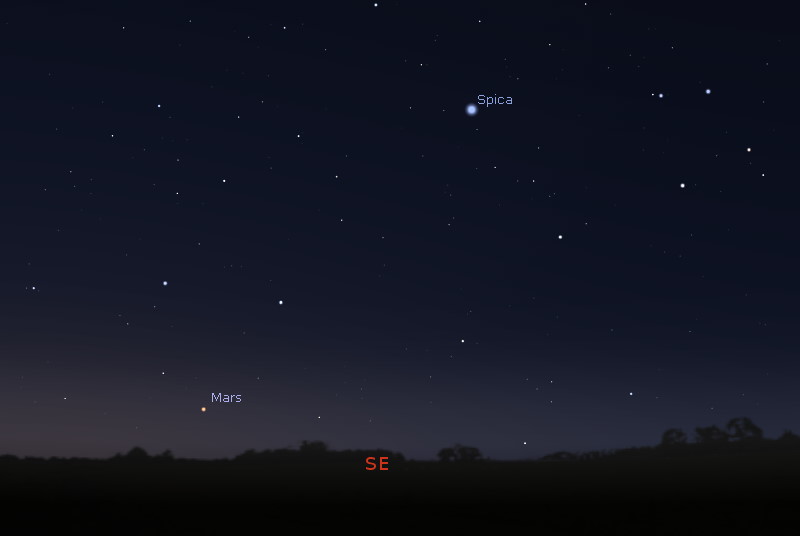
An “increased probability of car wrecks” conjunction of planets and the Moon occurs in the south-southwestern sky after sunset all week; Jupiter, Saturn, Venus and the Moon appear near each other from Dec. 7-10th. If you must ogle at this conjunction, please do so while not operating a motor vehicle.
The constellations Canis Major, Orion and Taurus appear in the west-southwestern sky before sunrise.

- The Moon is a Waxing Crescent – visible toward the southwest in early evening.
- The First Quarter Moon occurs on Dec. 10th – visible high in the southern sky in early evening.
- After Dec. 10th, the Moon will be a Waxing Gibbous – visible to the southeast in early evening, and up for most of the night.
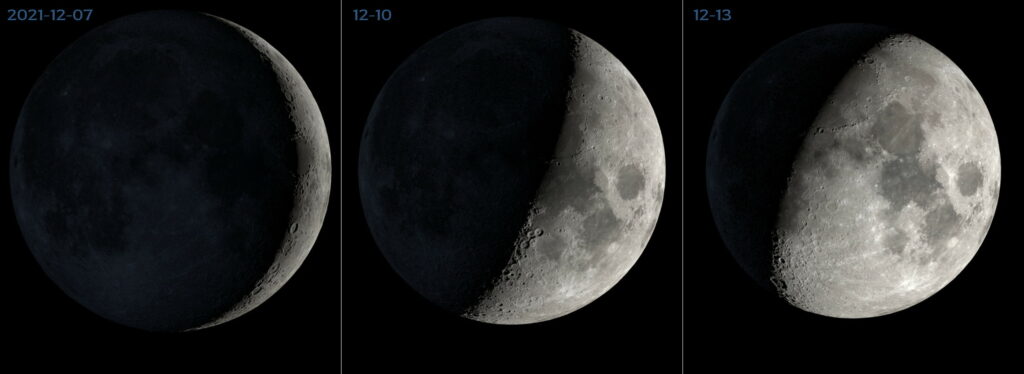
If you click on the Moon image above, or click this link, you will go to NASA’s Moon Phase and Libration, 2021 page – it will show you what the Moon looks like right now. If you click the image on that page, you will download a high-rez TIFF image annotated with the names of prominent features – helpful for logging your lunar observations!
Moon Close-Up – Dec. 10th
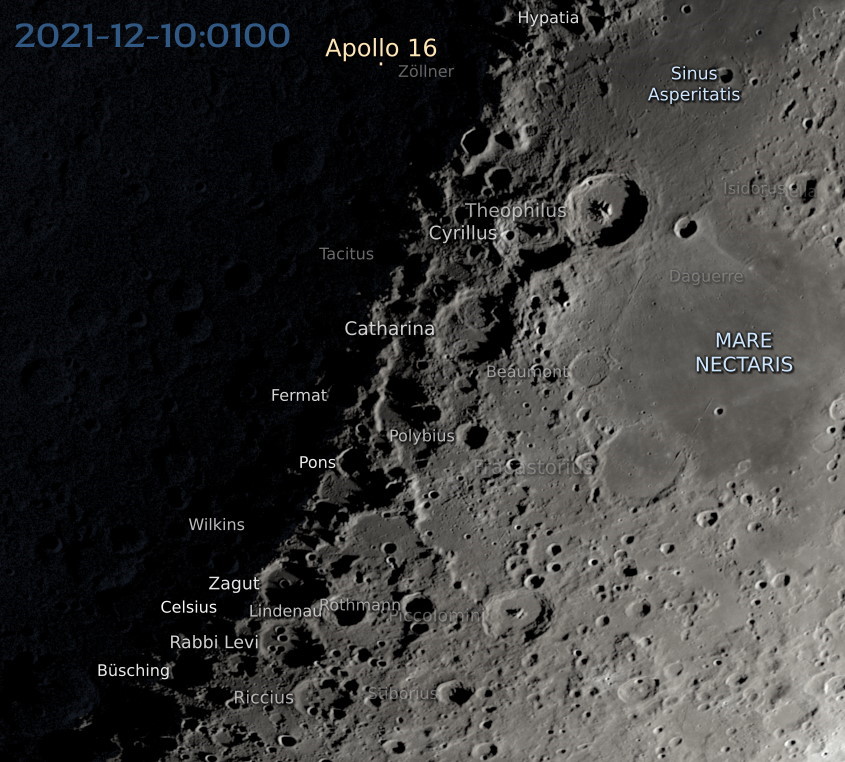
Moon News

The Sun has 1 spot – Spaceweather.com says “Sunspot AR2904 has a stable, uncomplicated magnetic field that poses no threat for strong solar flares.”
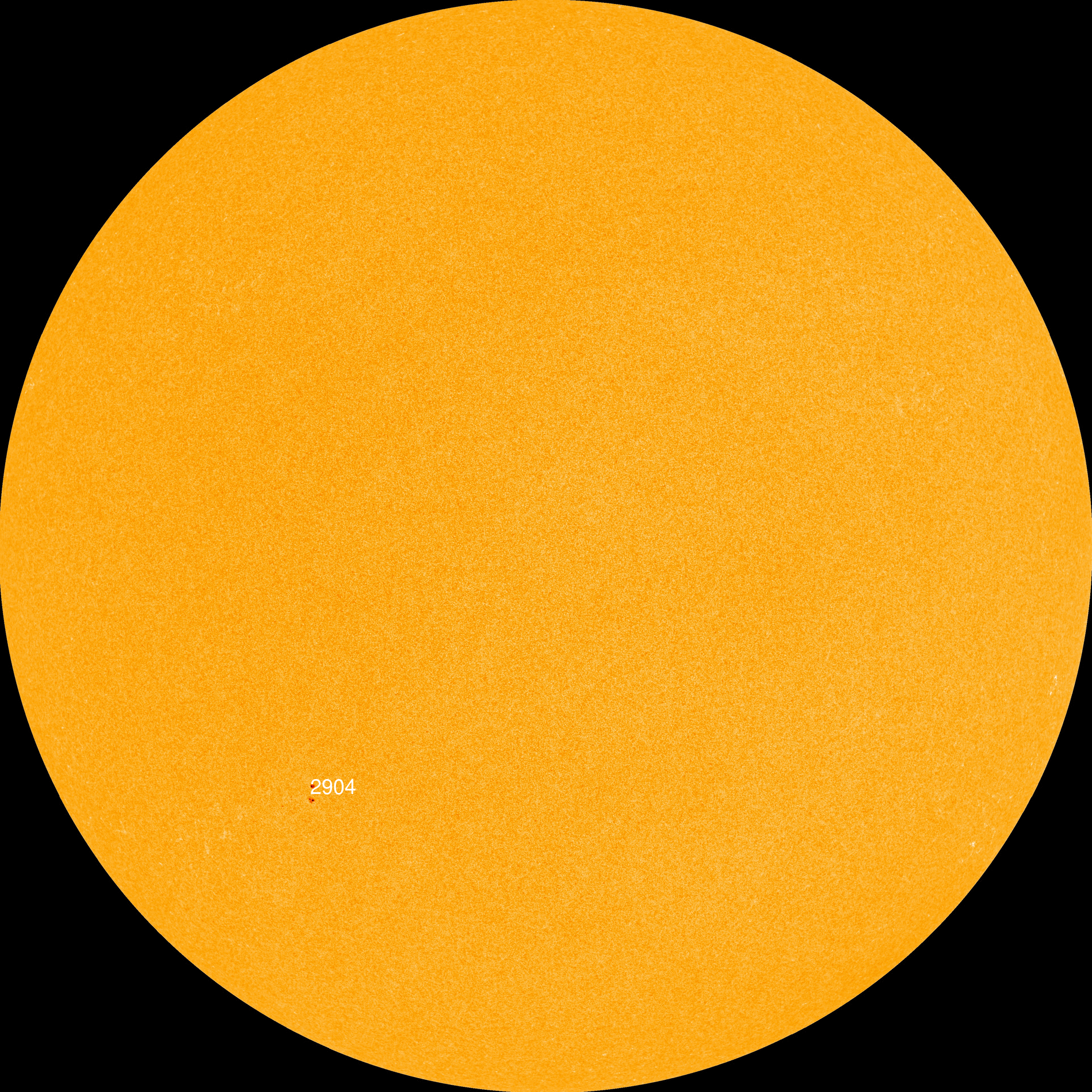
Videos courtesy of NASA/SDO and the AIA, EVE, and HMI science teams.
You can view the Sun in near real-time, in multiple frequencies here: SDO-The Sun Now.
You can create your own time-lapse movies of the Sun here: AIA/HMI Browse Data.
You can browse all the SDO images of the Sun from 2010 to the present here: Browse SDO archive.
Amateur Solar Astrophotography
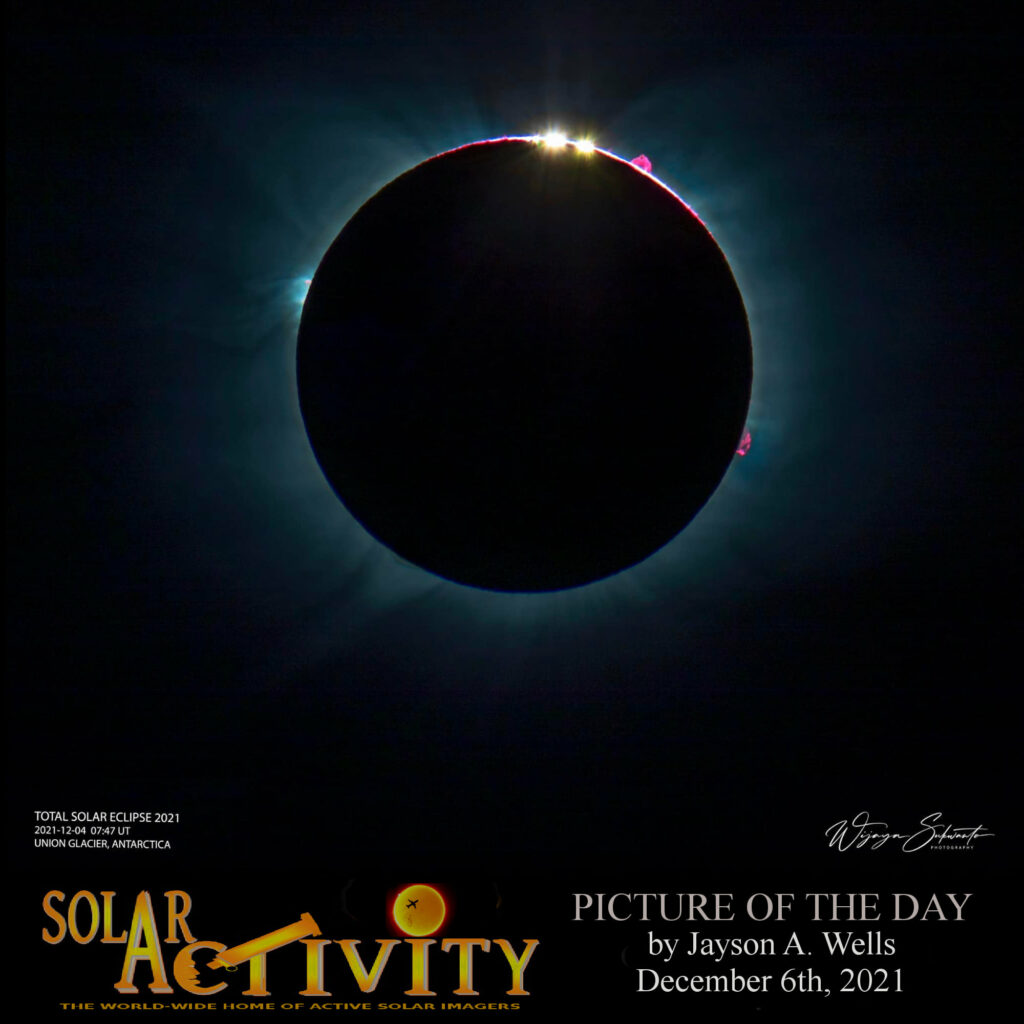
Solar Corona
Solar wind speed is 509.2 km/sec ▲ with a density of 8.1 protons/cm3 ▼ at 1316 UT.
Click here to see a near real-time animation of the corona and solar wind from the Solar & Heliospheric Observatory (SOHO).
Sun News:
The ESA’s Solar Orbiter completes Earth flyby – with a lot of fanfare about flying through Earth’s space debris fields.

- Near-Earth Objects (NEOs) discovered this month: 63, this year: 2957 (+143), all time: 27,651 (+63)
- Potentially Hazardous Asteroids (PHAs): 2234 (+3 updated 2021-11-30)
- Total Minor Planets discovered (NASA): 1,113,527 (updated 2021-08-17) – not updated for many weeks.
- Total Minor Planets discovered (MPC): 1,143,371 (-64, updated 2021-12-07)
Upcoming Earth-asteroid encounters:
| Asteroid | Date(UT) | Miss Distance | Velocity (km/s) | Diameter (m) |
|---|---|---|---|---|
| 2021 XA3 | 2021-Dec-07 | 14.6 LD | 8.2 | 19 |
| 2021 XN2 | 2021-Dec-07 | 2.3 LD | 7.4 | 13 |
| 2021 XC | 2021-Dec-08 | 6.5 LD | 6.9 | 20 |
| 2021 WT4 | 2021-Dec-08 | 10.8 LD | 6.4 | 16 |
| 2021 WA3 | 2021-Dec-09 | 17.2 LD | 7 | 17 |
| 2021 WW3 | 2021-Dec-09 | 5.6 LD | 7.6 | 15 |
| 2021 XX2 | 2021-Dec-09 | 2 LD | 6.3 | 7 |
| 2021 XZ2 | 2021-Dec-10 | 8.3 LD | 18.9 | 21 |
| 2021 WV1 | 2021-Dec-11 | 1.5 LD | 3 | 7 |
| 2021 XQ2 | 2021-Dec-11 | 10 LD | 16.4 | 28 |
| 2021 XG | 2021-Dec-11 | 7.7 LD | 4.8 | 9 |
| 4660 | 2021-Dec-11 | 10.3 LD | 6.6 | 759 |
| 2021 XD2 | 2021-Dec-11 | 3.5 LD | 6.9 | 13 |
| 2021 WJ3 | 2021-Dec-11 | 9.9 LD | 5.5 | 21 |
| 2021 WQ1 | 2021-Dec-12 | 7.8 LD | 8.8 | 27 |
| 2021 WZ5 | 2021-Dec-13 | 4.6 LD | 1.9 | 5 |
| 2021 VW27 | 2021-Dec-13 | 18.7 LD | 8.4 | 38 |
| 2019 XQ1 | 2021-Dec-13 | 14.1 LD | 9.1 | 30 |
| 2021 WW2 | 2021-Dec-13 | 14.3 LD | 10.9 | 28 |
| 2021 VT6 | 2021-Dec-14 | 7.7 LD | 6.9 | 50 |
| 2021 WZ4 | 2021-Dec-14 | 5 LD | 14 | 39 |
| 2004 YC | 2021-Dec-15 | 18.4 LD | 8.1 | 27 |
| 163899 | 2021-Dec-17 | 14.2 LD | 5.6 | 1093 |
| 2021 LX3 | 2021-Dec-18 | 19.7 LD | 6.5 | 124 |
| 2016 YY10 | 2021-Dec-21 | 11.3 LD | 9.2 | 23 |
| 2017 XQ60 | 2021-Dec-21 | 13.7 LD | 15.7 | 47 |
| 2016 TR54 | 2021-Dec-24 | 16.9 LD | 15.5 | 135 |
| 2018 AH | 2021-Dec-27 | 11.9 LD | 12.7 | 112 |
| 2017 AE3 | 2021-Dec-29 | 9.3 LD | 19.1 | 155 |
| 2014 YE15 | 2022-Jan-06 | 19.3 LD | 6.4 | 8 |
| 2020 AP1 | 2022-Jan-07 | 4.6 LD | 5.7 | 4 |
| 2013 YD48 | 2022-Jan-11 | 14.6 LD | 14.8 | 107 |
| 2021 BA | 2022-Jan-18 | 9.8 LD | 9.1 | 22 |
| 7482 | 2022-Jan-18 | 5.2 LD | 19.6 | 1732 |
| 2018 PN22 | 2022-Jan-21 | 11.4 LD | 2.7 | 11 |
| 2017 XC62 | 2022-Jan-24 | 18.7 LD | 4.3 | 112 |
| 2021 BZ | 2022-Jan-27 | 17.6 LD | 14.6 | 39 |
Asteroid News:

On December 6, 2021, the NASA All Sky Fireball Network reported 21 fireballs!
(15 sporadics, 4 sigma Hydrids, 1 Nov. omega Orionid, 1 Geminid)
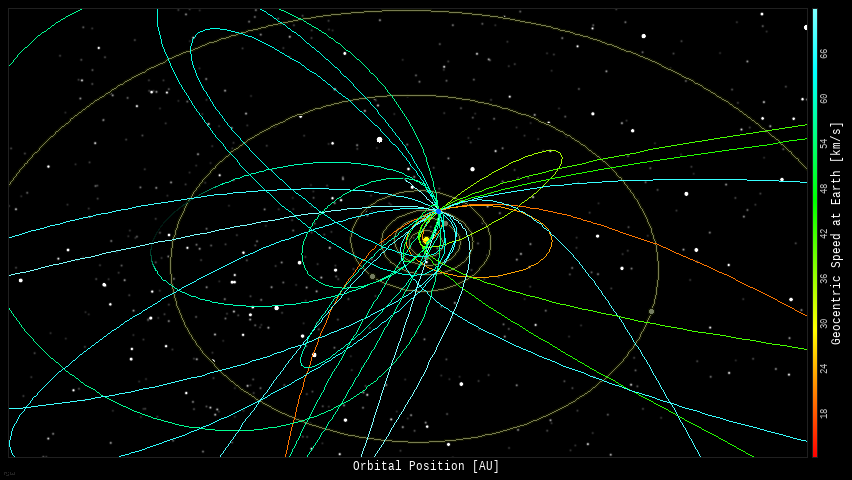
Fireball News:
If you see a bright meteor or a fireball, please REPORT IT to the American Meteor Society and the International Meteor Organization!

Position of the planets & several spacecraft in the inner solar system on December 6th:
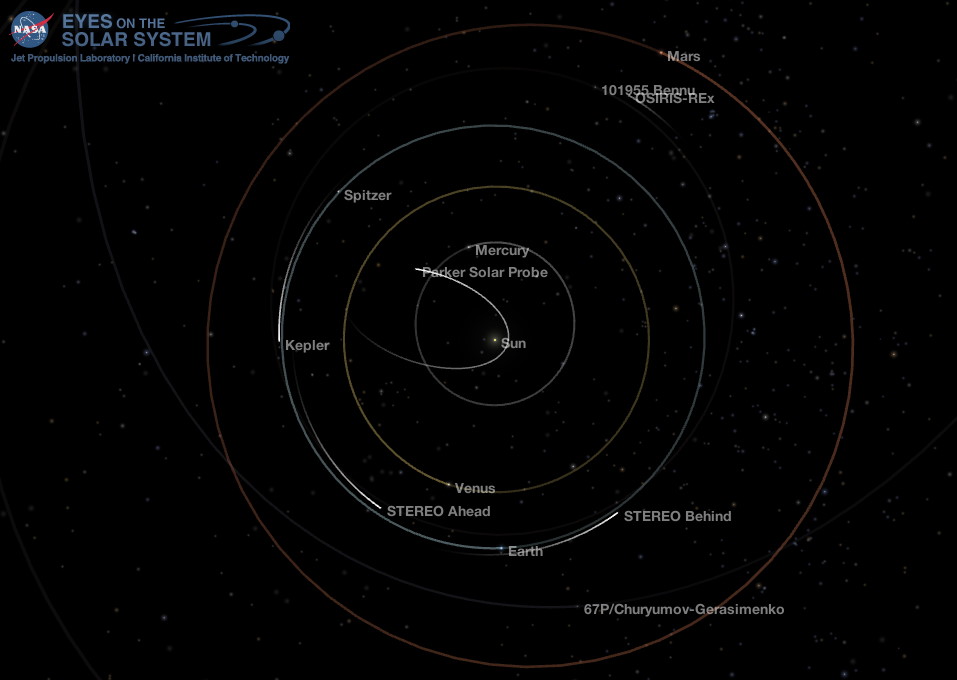
Position of the planets in the middle solar system:
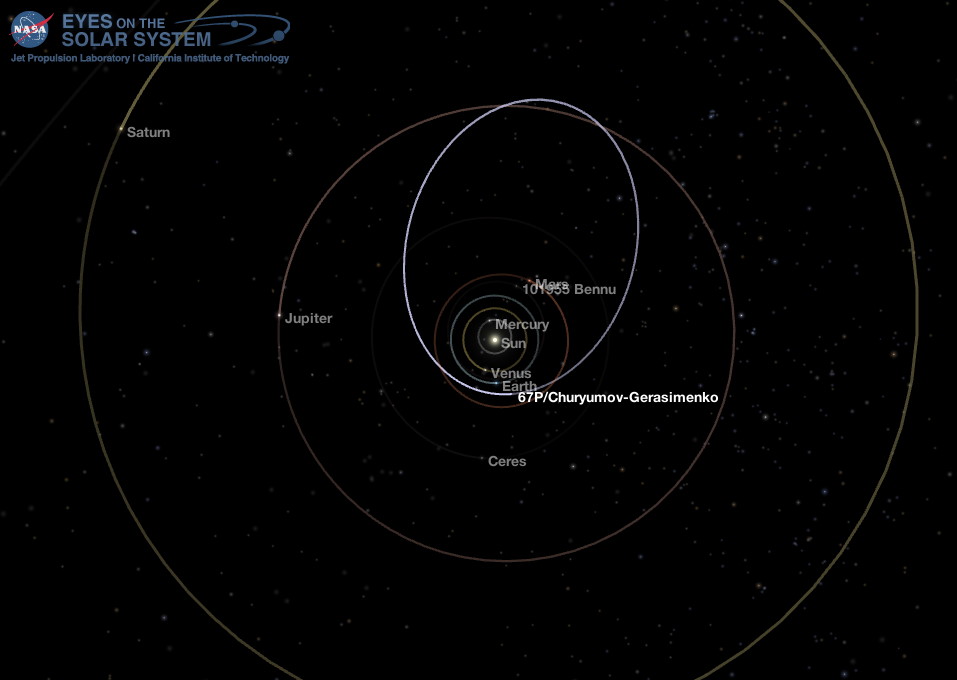
Position of the planets in the outer solar system:
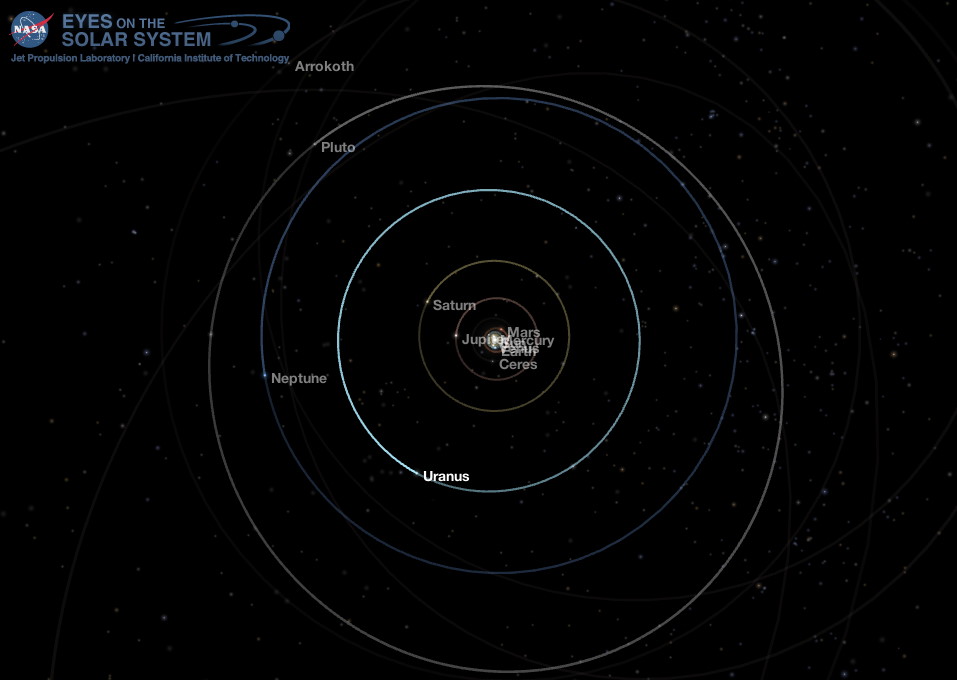
Solar System News

See a list of current NASA missions here: https://www.jpl.nasa.gov/missions?mission_status=current

ex·o·plan·et /ˈeksōˌplanət/, noun: a planet orbiting a star other than the Sun.
Data from the NASA Exoplanet Archive
* Confirmed Planets Discovered by TESS refers to the number planets that have been published in the refereed astronomical literature.
* TESS Project Candidates refers to the total number of transit-like events that appear to be astrophysical in origin, including false positives as identified by the TESS Project.
* TESS Project Candidates Yet To Be Confirmed refers to the number of TESS Project Candidates that have not yet been dispositioned as a Confirmed Planet or False Positive.
Exoplanet News:


SpaceWeather.com Realtime Aurora Gallery: https://spaceweathergallery.com/aurora_gallery.html
Latest Aurora Oval Forecast

- Visit an International Dark Sky Park: https://www.darksky.org/our-work/conservation/idsp/parks/
- If you live in Michigan, visit the Michigan Dark Skies site: https://sites.lsa.umich.edu/darkskies/

The mere fact that gravitational waves can be detected – just blows me away!
Beautiful Universe: Horsehead Nebula
I showed this image to students during my after-school astronomy and space science club:
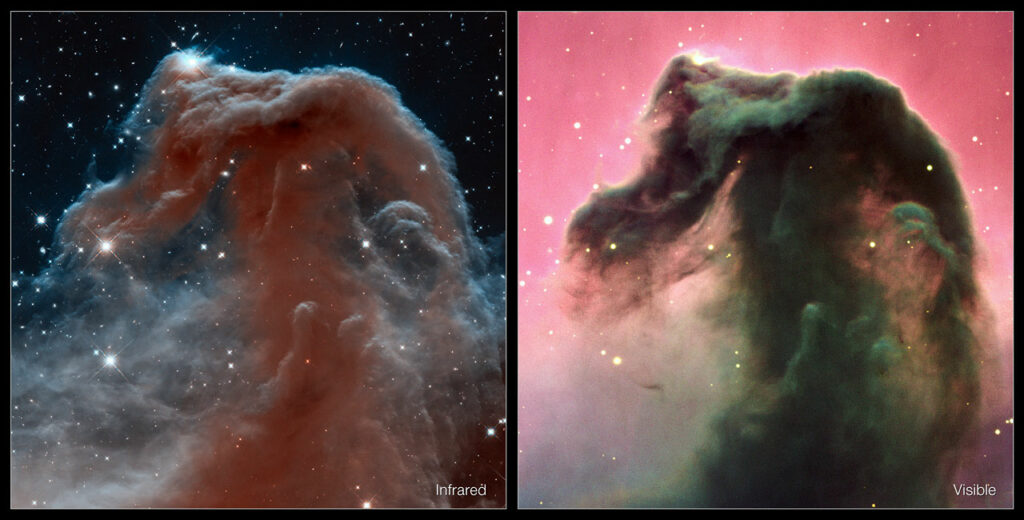
This image shows two different views of the Horsehead Nebula. On the right is a view of the nebula in visible light, taken using the European Southern Observatory’s Very Large Telescope in Chile (eso0202a). The image on the left shows the nebula in the infrared, using observations from Hubble’s high-resolution Wide Field Camera 3.
Software Apps used for this post:
NASA Eyes on the Solar System: an immersive 3D solar system and space mission simulator – free for the PC /MAC.
Stellarium: a free web-based planetarium app. It’s a great tool for planning observing sessions.
